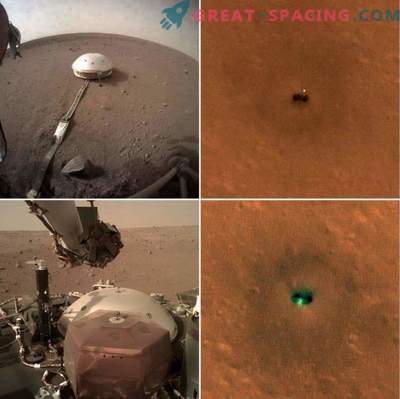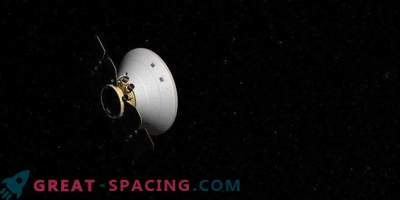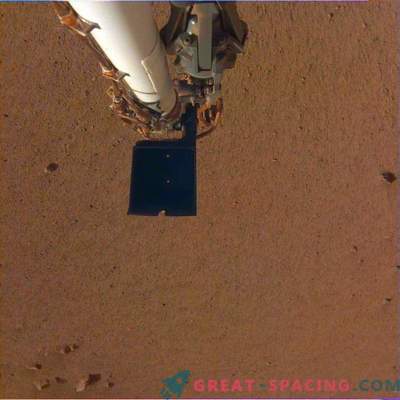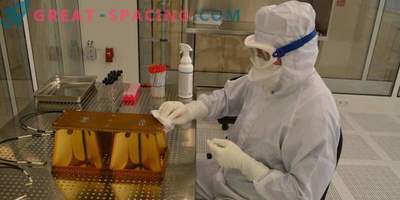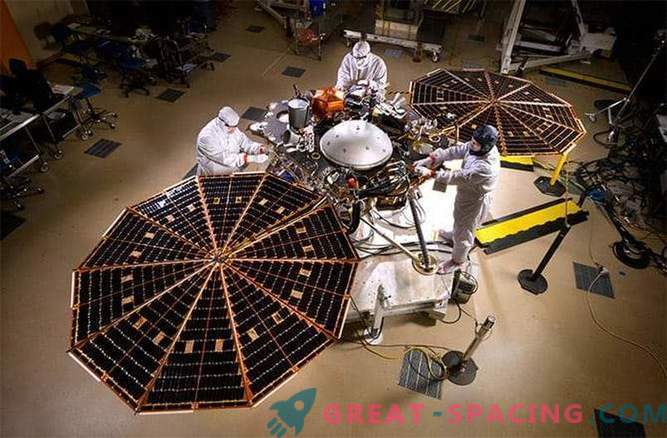
Engineers and technicians from Lockheed Martin Space Systems, Denver, launched the NASA InSight Reentry Module solar cell deployment test.
With such huge solar panels as are shown in the Lockheed Martin Clean Room Space Systems in Denver, Colorado, the next NASA mission to Mars can be proud.
The vehicle-sized vehicle of the mission “Exploration of the Subsoil Using Seismography, Geodesy, and Heat Transfer” (Interior Exploration using Seismic Investigations, Geodesy and Heat Transport in short, InSight) is scheduled to launch to the Red Planet in March 2016. He will continue the epic exploration of Mars by the aerospace agency, exposing some intimate secrets, revealing clues about the structure and origin of the planet.
InSight will perform an ultimatum test of the viability of the planet, something that has never been done so thoroughly and thoroughly before. Landing on Mars will take place approximately 6 months after launch from the California Air Force Base Vandenberg. InSight will deploy a set of tools that will measure the seismic activity caused by “marshokes” (tectonic activity of Mars) and meteorite impacts, drill through the upper layers of Martian rocks, and even record the flow of heat emanating from the deepest bowels of the planet. Also, using the radio antenna, the descent module, we hope, will fix Martian micro oscillations, which theoretically indicate the presence of a liquid core in Mars, like in the Earth. InSight is another step towards sending people to Mars in 2030. Armada of robot researchers, currently wandering in orbit and the surface of the Red Planet, glancing at the past of the planet, should find out its current geology and habitat, and prepare humanity, to theoretical knowledge, for life in this alien world.
“Today, our scientific research robots are making a tremendous success for us to move to Mars. Together, humans and robots will be pioneers of Mars and the Solar System, ”said Jim Green, head of the Planetary Science Department at NASA headquarters, Washington.
The photo above shows that the InSight descent vehicle package is very similar to the module from the successful NASA Phoenix mission, which descended to the Arctic region of Mars in 2008.
During the tests at Lockheed, which are currently underway and require a few more months to complete, the descent vehicle will be tested by extreme cold and vacuum, which it will have to withstand during its cruise to Mars inside the protective capsule of the migration module. It will also pass vibration tests to accurately simulate take-off and landing conditions, and will be exposed to the Martian environment simulator, so its effectiveness can be evaluated. “The build of InSight went very well and now we’ll see how it works,” said Stuhe Spat, an insider program manager at Lockheed Martin.
“The environmental testing regime is designed to weed out any problems with the spacecraft, so that we can eliminate them while it is here on Earth. This stage lasts almost as long as the assembly, but we want to make sure that we are delivering NASA a ship that will perform what is expected of it in extreme conditions. ”
“It's great to see a spaceship with a launch configuration,” said project leader Inside Hoffman from the Jet Propulsion Laboratory at NASA, Pasadena, California. “Many teams from around the world worked long hours to get their elements of a system designed for these tests. There is still a lot of work left before we are ready to launch, but it’s fantastic to get to this critical milestone. ”



